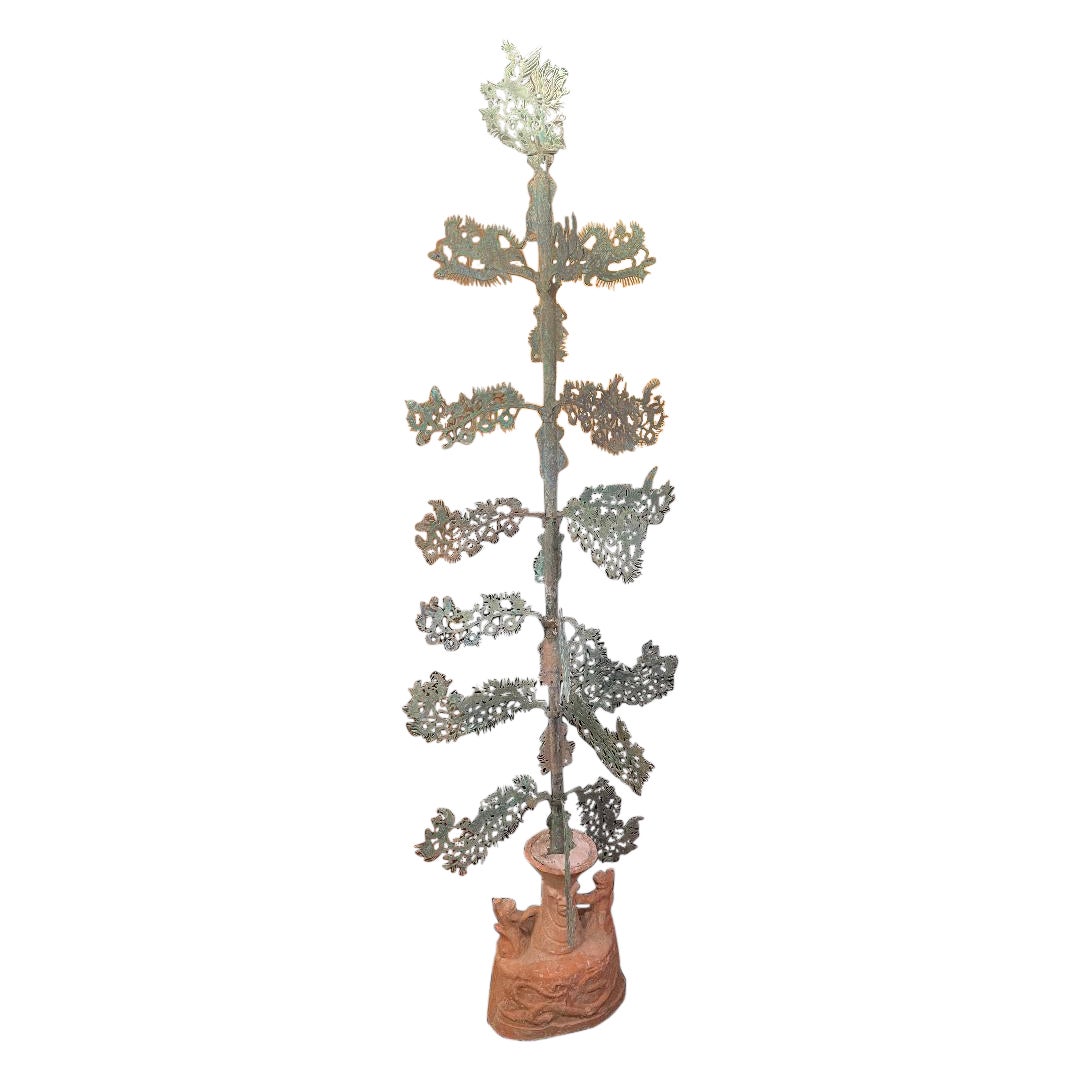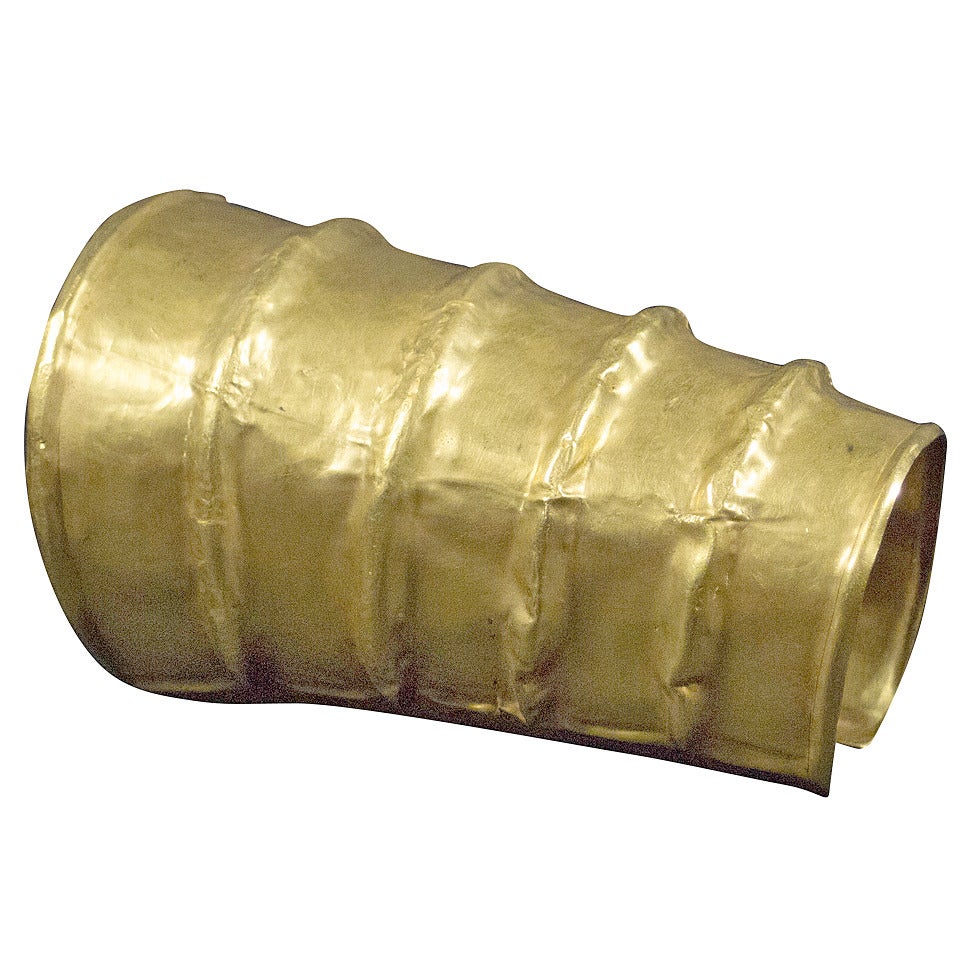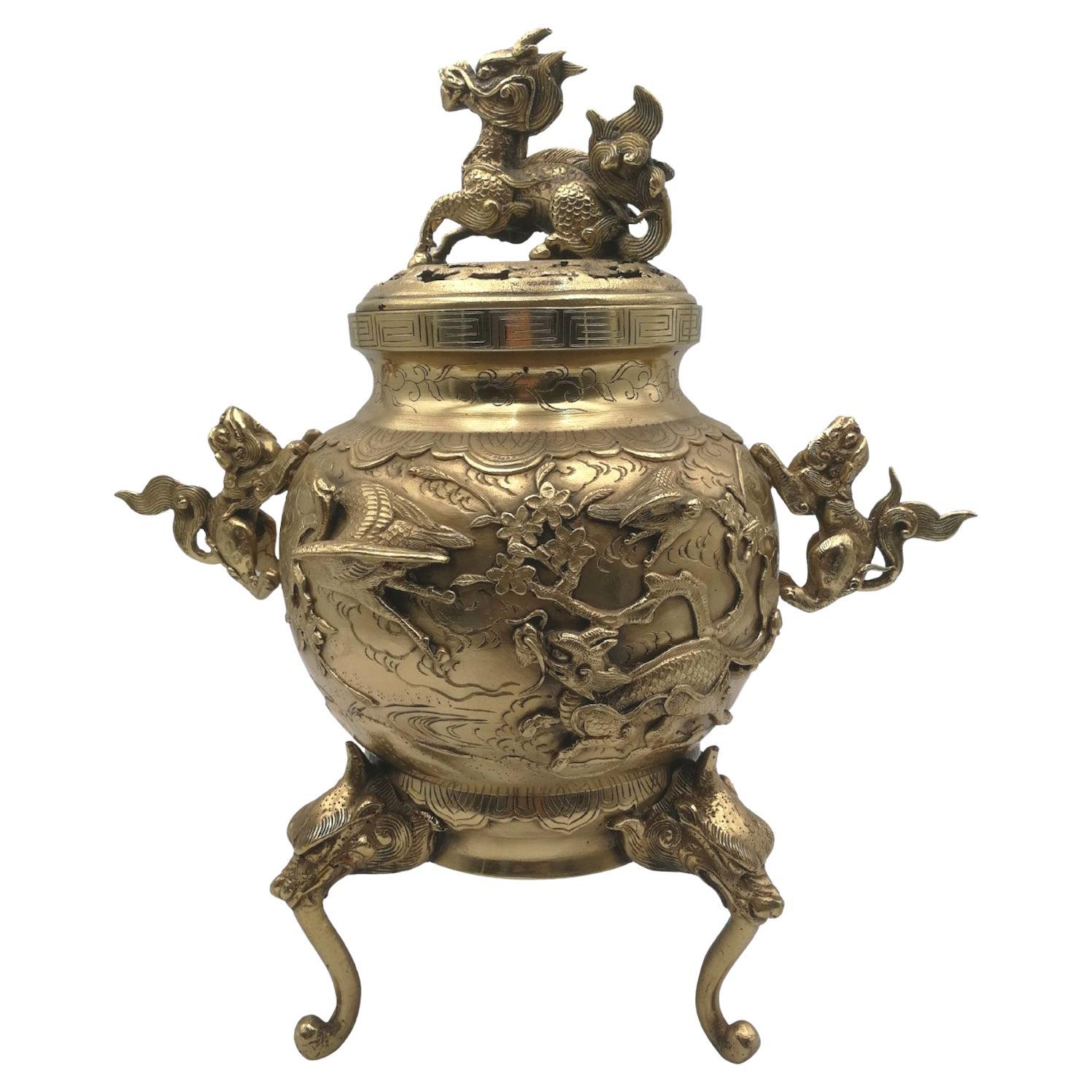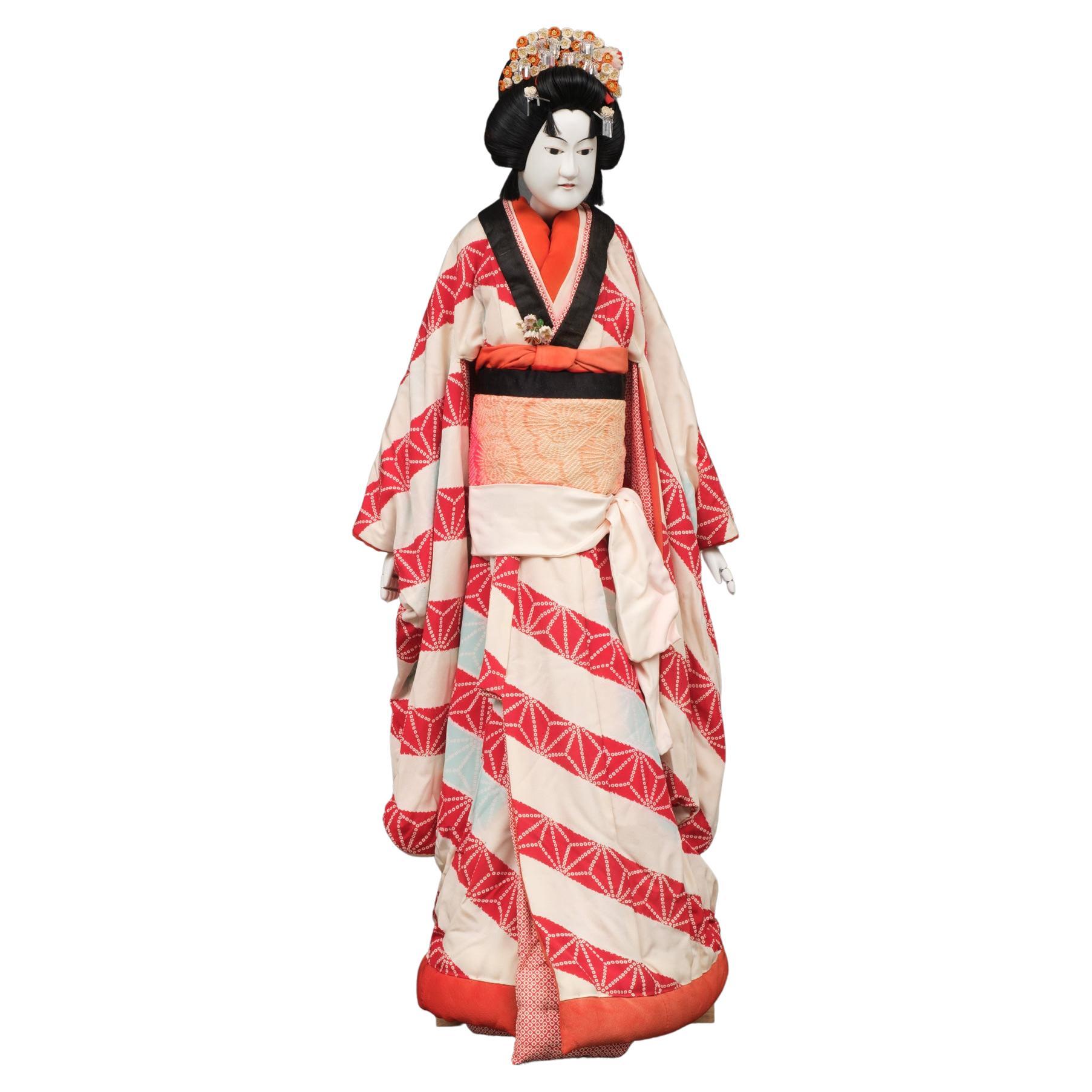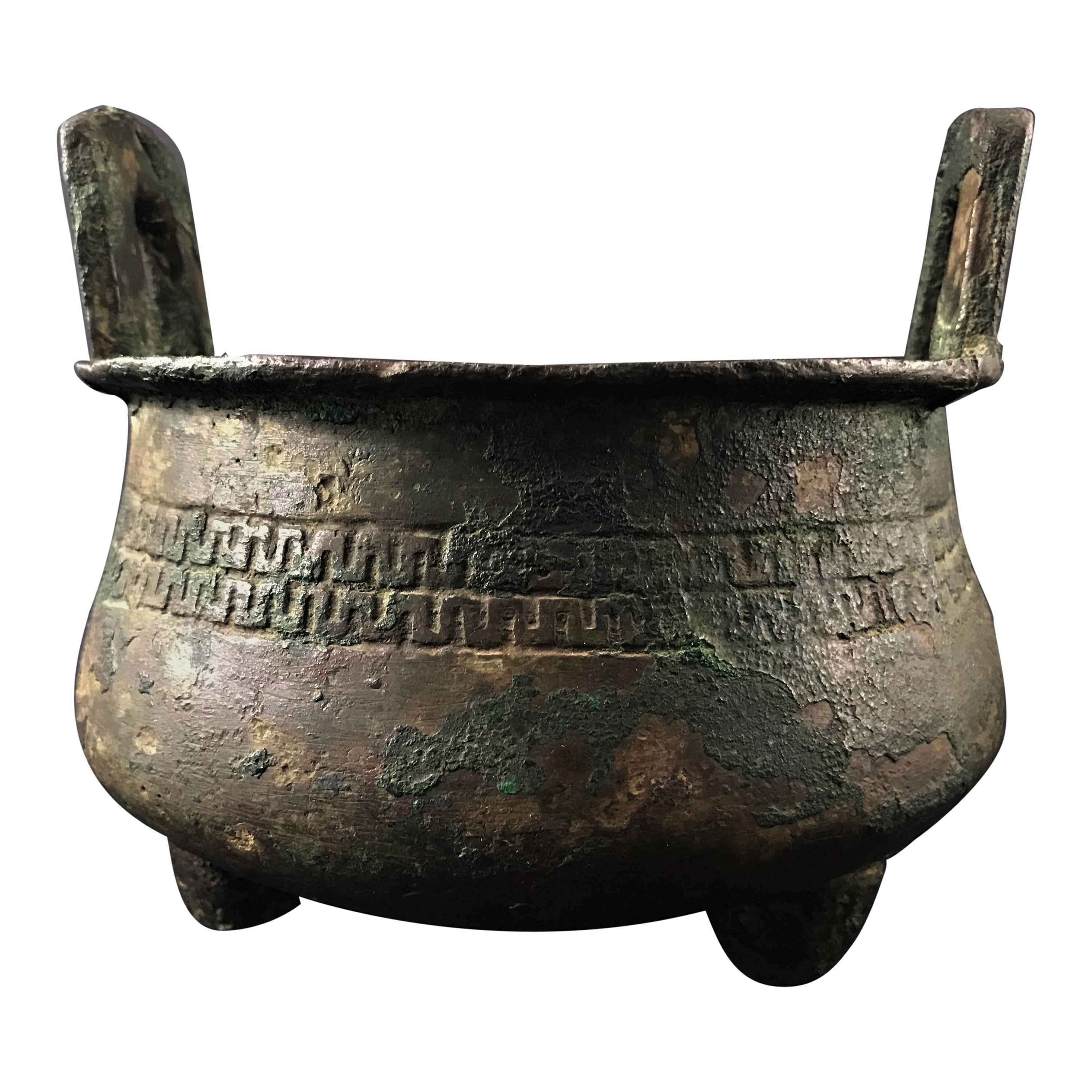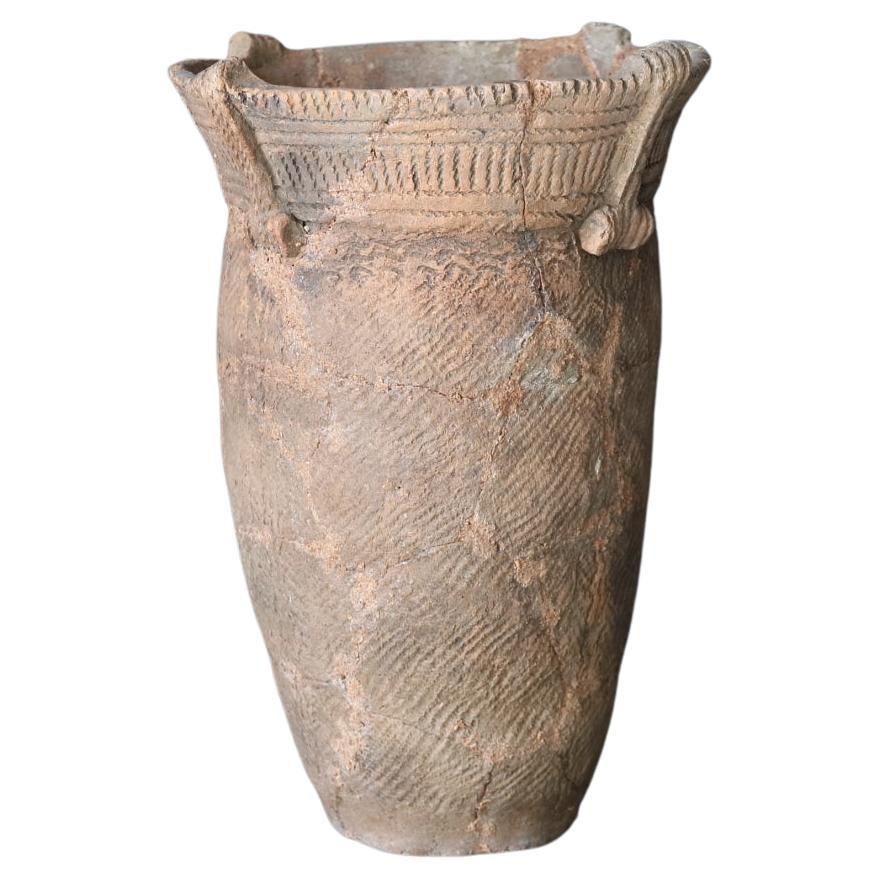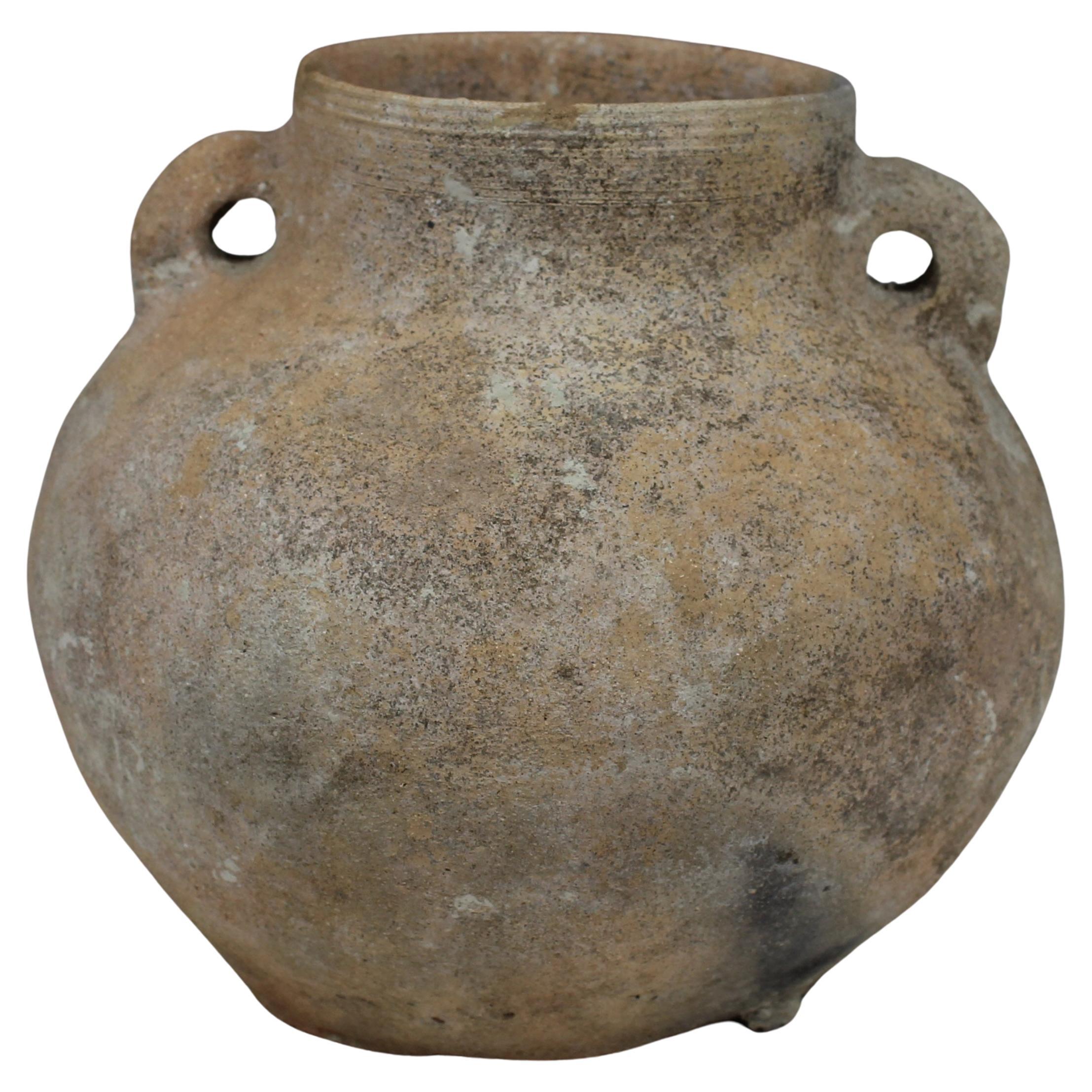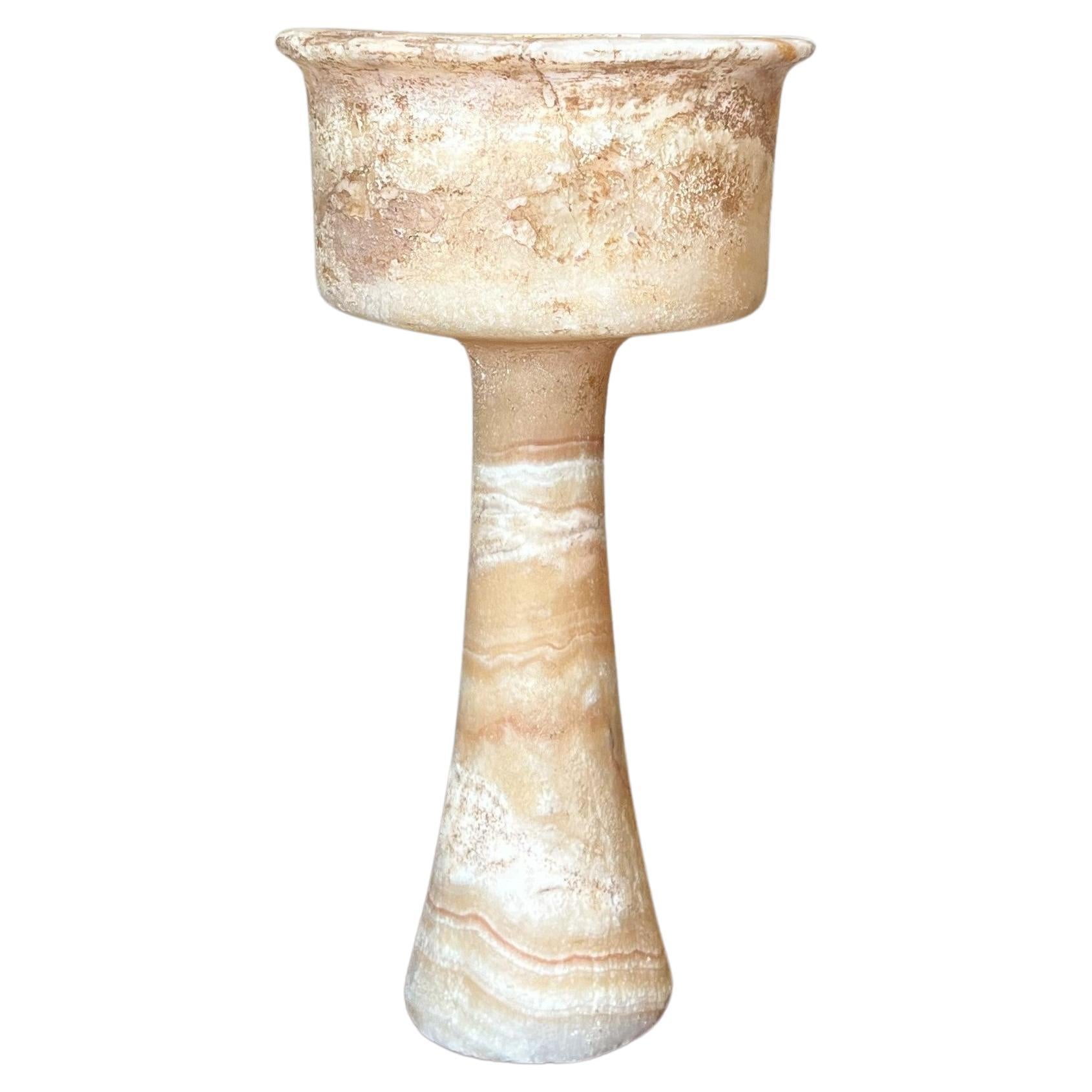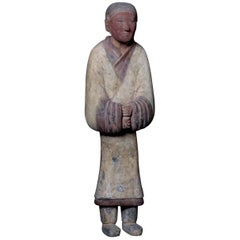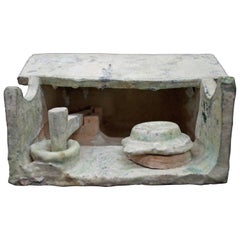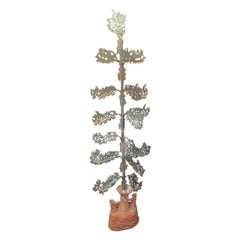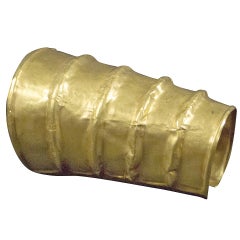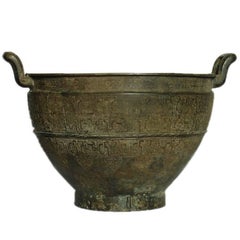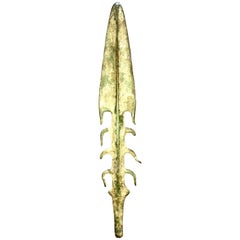
Very Important Indo-Gangetic Bronze Spearhead, India, Bronze Age 3, 000 BC
View Similar Items
Want more images or videos?
Request additional images or videos from the seller
1 of 3
Very Important Indo-Gangetic Bronze Spearhead, India, Bronze Age 3, 000 BC
About the Item
- Dimensions:Height: 16 in (40.64 cm)Width: 4 in (10.16 cm)Depth: 4 in (10.16 cm)
- Materials and Techniques:
- Place of Origin:
- Period:
- Date of Manufacture:3rd Millenium BC
- Condition:Wear consistent with age and use. Weight: 2.1 lbs.
- Seller Location:San Pedro Garza Garcia, MX
- Reference Number:Seller: IN-1941stDibs: LU3172311273563
About the Seller
3.7
Vetted Seller
These experienced sellers undergo a comprehensive evaluation by our team of in-house experts.
1stDibs seller since 2017
22 sales on 1stDibs
More From This SellerView All
- Elegant Han Dynasty Terracotta Warrior - China '206 BC - 220 AD'Located in San Pedro Garza Garcia, Nuevo LeonImpressive terracotta warrior representing a banner bearer gripping a wooden staff with his hands (dematerialized through the ages); his gaze is ser...Category
Antique 15th Century and Earlier Chinese Han Antiquities
MaterialsTerracotta
- Monumental Han Dynasty Terracotta Horse - TL Tested - China, '206 BC–220 AD'Located in San Pedro Garza Garcia, Nuevo LeonA massive pottery horse with separately made head and tail, standing on all fours and striding with its right hoof forward. Extended snout ends in parted lips showing teeth beneath i...Category
Antique 15th Century and Earlier Chinese Han Antiquities
MaterialsTerracotta
- Eastern Han Dynasty Terracotta Barn Workshop, China '206BC - 220AD' Ex-MuseumLocated in San Pedro Garza Garcia, Nuevo LeonSlab pottery constructed barn workshop having a peaked roof – open walled form with a mechanical pounder and a large round covered storage container. Light blue-green mottled glazed surface with some iridescence patina to the glaze. Condition: Intact, excellent condition, an unusual example. Provenance: The Living Torah Museum, Brooklyn; ex. Sands of Time, 2002. Sculptural effigies of domesticated animals were often interred in the tombs of nobility and elite members of the social hierarchy. Models like this one were made to represent everything from simple goat or pig pens to the most elaborate towers and palaces. Because very few ancient Chinese buildings have survived intact, these models, along with descriptions from ancient texts, give a good representation of what the buildings might have looked like. This fantastic piece is accompanied by a Certificate of Authenticity. Burial figurines of graceful dancers, mystical beasts, and everyday objects reveal both how people in early China approached death and how they lived. Since people viewed the afterlife as an extension of worldly life, these figurines, called mingqi, sometimes referred as “spirit utensils” or “vessels of ghosts” disclose details of routine existence and provide insights into belief systems over a thousand-year period. For the first time in Chinese history, we have images of rural and daily life during the Han in the form of contemporary...Category
Antique 15th Century and Earlier Chinese Han Antiquities
MaterialsTerracotta
- Eastern Han Dynasty Terracotta Model of a Paper Mill , China '206BC - 220AD'Located in San Pedro Garza Garcia, Nuevo LeonSlab pottery constructed Model of a Paper Mill, in Green and Cream Color Glazed Terracotta having a peaked roof – open walled form with a mechanical pounder and a large round storage container. Light blue-green mottled glazed surface with some iridescence patina to the glaze. The Iridescence is a refraction of the layers on the glass that produces multicolor hues & metallic luster, and only develops after one thousand years of being buried in the ground. An unquestionable mark of antiquity, impossible to falsify. Han Dynasty, dated 206 B.C-220 A.D. Condition: Excellent, wear commensurate with age, an unusual example. This fantastic piece is accompanied by a Certificate of Authenticity. Sculptural effigies of domesticated animals were often interred in the tombs of nobility and elite members of the social hierarchy. Models like this one were made to represent everything from simple goat or pig pens to the most elaborate towers and palaces. Because very few ancient Chinese buildings have survived intact, these models, along with descriptions from ancient texts, give a good representation of what the buildings might have looked like. Burial figurines of graceful dancers, mystical beasts, and everyday objects reveal both how people in early China approached death and how they lived. Since people viewed the afterlife as an extension of worldly life, these figurines, called mingqi, sometimes referred as “spirit utensils” or “vessels of ghosts” disclose details of routine existence and provide insights into belief systems over a thousand-year period. For the first time in Chinese history, we have images of rural and daily life during the Han in the form of contemporary records...Category
Antique 15th Century and Earlier Chinese Han Antiquities
MaterialsTerracotta
- Ming Dynasty Very Rare Wooden Bust of LohanLocated in San Pedro Garza Garcia, Nuevo LeonVery serene depiction of a Lohan carved in wood, eroded with the pass of time. Lohan is the Chinese term, derived from the Sanskrit word Arhan, for a disciple or follower of Buddha w...Category
Antique 15th Century and Earlier Ming Antiquities
- Very Elegant Tang Dynasty Dignitary in Orange Terracotta, China '618-907 AD'Located in San Pedro Garza Garcia, Nuevo LeonVery elegant terracotta dignitary in blue and red robes standing with the hands joined at the chest. He wears a blue headdress with a bird at its center. Orange Terracotta This gorg...Category
Antique 15th Century and Earlier Chinese Tang Antiquities
MaterialsTerracotta
You May Also Like
- Important Chinese Ancient Bronze Money Tree, 25BC-220ADLocated in South Burlington, VTChina, Ancient Bronze “Money Tree” Yaoqian Shu with original pottery base, Han dynasty (25 BCE – 220 CE) Dimensions: 155cm, 62 inches high A sculpted terracotta pottery base in the form of a tortoise with attendants and inserted with five individual bronze pole segments with twenty four individual hanging bronze open work money “branches” attached in tiers, four per tier and topped with a figure of a bronze phoenix as apex most bearing varying degrees of malachite and azurite encrustation from ancient burial. Important Description Details: Pottery "tortoise" base: 14.5" high and 11" wide Bronze sections: 7pcs pole bronze sections approximately 8" length each 1pc top "phoenix" bronze section approximately 7" high and 6" wide 20 pcs long bronze hanging wings approximately 10" long and 5" wide each 4 pcs short bronze hanging wings (near top) approximately 7" long and 4" wide each Total 32 pcs with ancient green and blue azurite patina. Catalog reference: Schneible Fine arts catalog - 35 Years Collecting Treasures- Number 11p. 28 (see photos) Provenance: Provenance: Private family collection formerly exhibited “Asia Week” New York City, Fuller Building, Zabriskie Gallery, 2008. History of money trees: In the late Han Dynasty tombs...Category
Antique 15th Century and Earlier Chinese Han Antiquities
MaterialsBronze
- Chinese Dian Culture Large Gold Cuff, circa 2nd Century BC, Southern ChinaLocated in Austin, TXA large and impressive solid high karat gold cuff from the Dian Kingdom, circa 2nd century BC, modern day Yunnan Province, China. . This striking cuff is crafted from hand hammered ...Category
Antique 15th Century and Earlier Chinese Han Antiquities
MaterialsGold
- Archaic Chinese Bronze Sieve, 722 BC–221 BCLocated in Prahran, VictoriaChinese bronze vessel/sieve for food from the Warring States period 722 BC–221 BC. This bronze comes with a Japanese paulownia wood box with inscription by Zoroku. Hata Zoroku was a ...Category
Antique 15th Century and Earlier Chinese Archaistic Antiquities
MaterialsBronze
- Japanese bronze KoroLocated in Beuzevillette, FRImpressive handmade large and powerfully cast Japanese tripod bronze censer of the 19th century, made during the Meiji period and with mythical animals...Category
Antique 19th Century Japanese Antiquities
MaterialsBrass
$2,843 - Very large Japanese Bunraku 文楽 Doll of a Beautiful Lady Known as Yaoya OshichiLocated in Amsterdam, NLA very tall and exceptionally well-made Bunraku doll, known in Japan as a Ningyô Jôrurui depicting the beautiful character of Yaoya Oshichi, the green grocer’s daughter. Completely d...Category
20th Century Japanese Antiquities
MaterialsTextile, Wood, Paint
- China Zhou Dynasty Bronze Perfume BurnerLocated in Beuzevillette, FRBucket burns perfume in bronze resting on three feet. The body is sculpted with a band frieze with an archaic motif. Two inverted U-shaped handles punctuate the edge. This type of bronze bucket was cast with lost wax from molds in several parts and assembled when the piece was poured, these are the traces that can be seen on the back of the bucket. . The bronze has a beautiful green and dark gray excavation patina. This perfume burner was originally to have longer feet, no doubt arched, cut very long ago since the place of the cut has the same patina as the rest of the piece. China Zhou Dynasty...Category
Antique 15th Century and Earlier Chinese Archaistic Antiquities
MaterialsBronze
